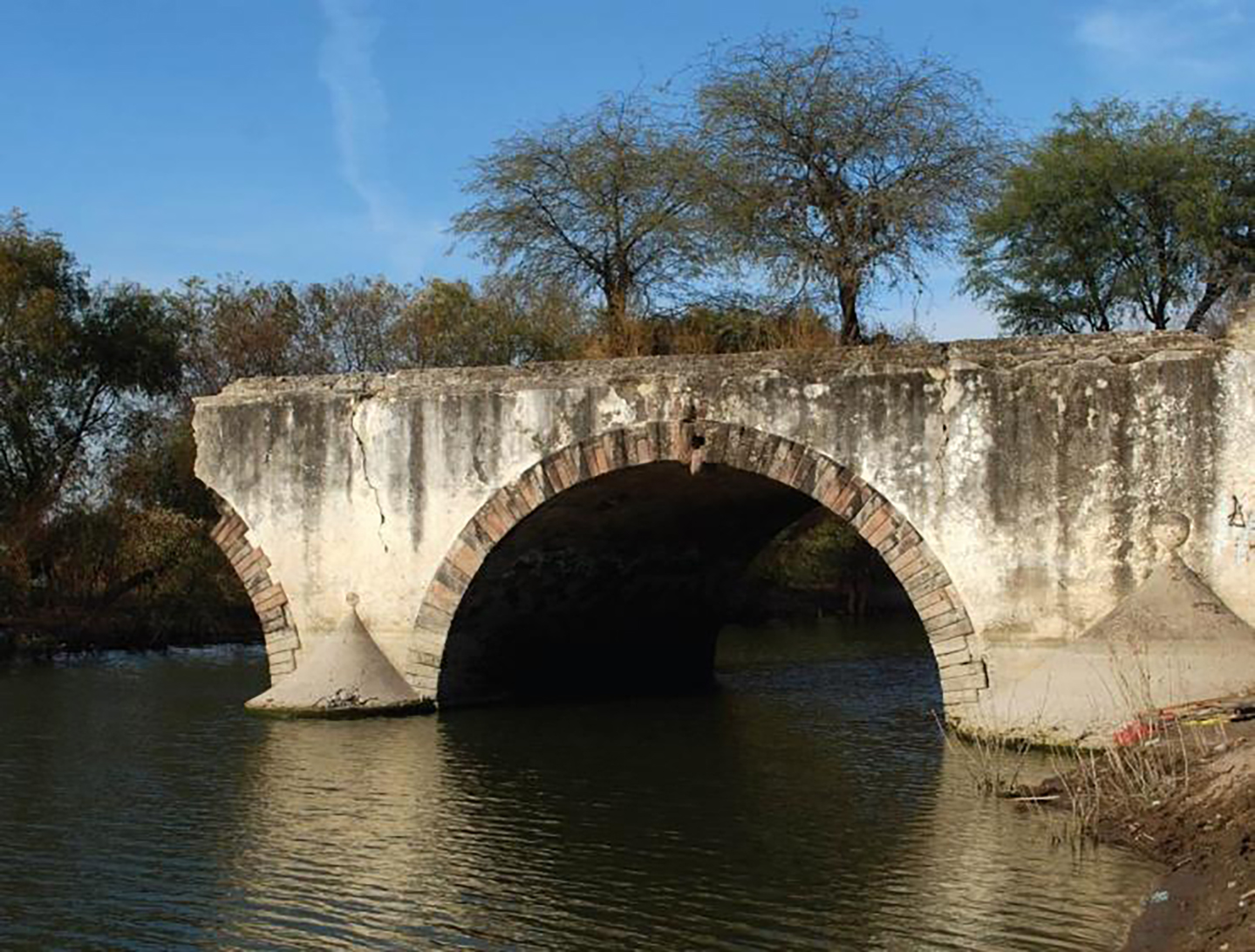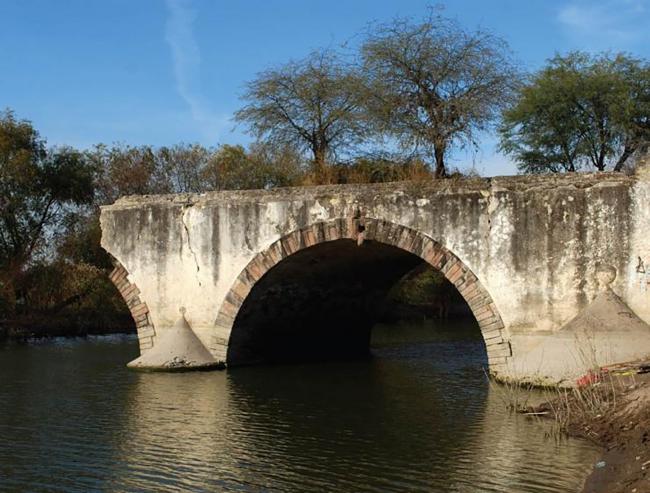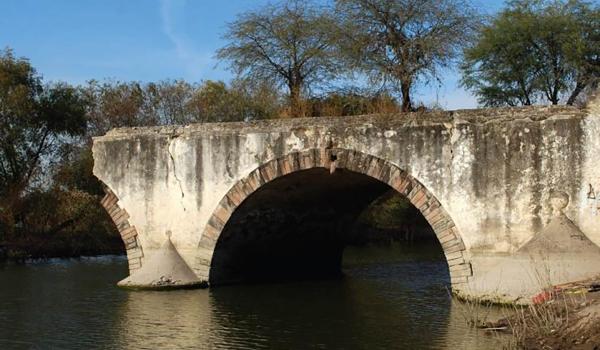Puente de San Rafael
Route element
Puente de San Rafael
The San Miguel River, or La Laja, flowed nearly five kilometers from the Villa de San Miguel el Grande, now San Miguel de Allende. During the 16th, 17th, and 18th centuries, crossing this tumultuous river had to be done using canoes or through the various bridges constructed in the jurisdiction during that time.
One of these bridges was the San Rafael Bridge, which, like others, featured its own roadways and paving. Its construction was particularly important due to the area's rugged terrain and, most notably, because of the strategic significance of the location for travel along the Royal Inland Road and its secondary routes.
The San Rafael Bridge was a regular route for local residents, travelers, and merchants who transported a variety of goods in their caravans, including weekly mail and merchandise from Tierra Adentro, the mining districts, and Mexico City.
Despite the substantial annual investment in gold pesos for the construction and ongoing repair of bridges by the Public Treasury of the Villa de San Miguel el Grande, the construction of the San Rafael Bridge in the 18th century was notable for being one of the most important works in the jurisdiction. It was an essential passage for merchants transporting goods from the Royal Customs of Mexico, Veracruz, Acapulco, Puebla, Querétaro, San Juan de los Lagos, San Luis Potosí, Fresnillo, Nombre de Dios, Sombrerete, Zacatecas, Guadalajara, Aguascalientes, Guanajuato, San Miguel el Grande, San Felipe, Dolores, León, Valladolid, and other places. The intense and continuous traffic of people, goods, and livestock explains the 15-meter width of the San Rafael Bridge, making it one of the largest bridges situated along the route of the Royal Inland Road.
During the 19th century, the San Rafael Bridge continued to hold some importance until, in the early decades of the 20th century, one of its arches was destroyed by the force of the waters during floods.





